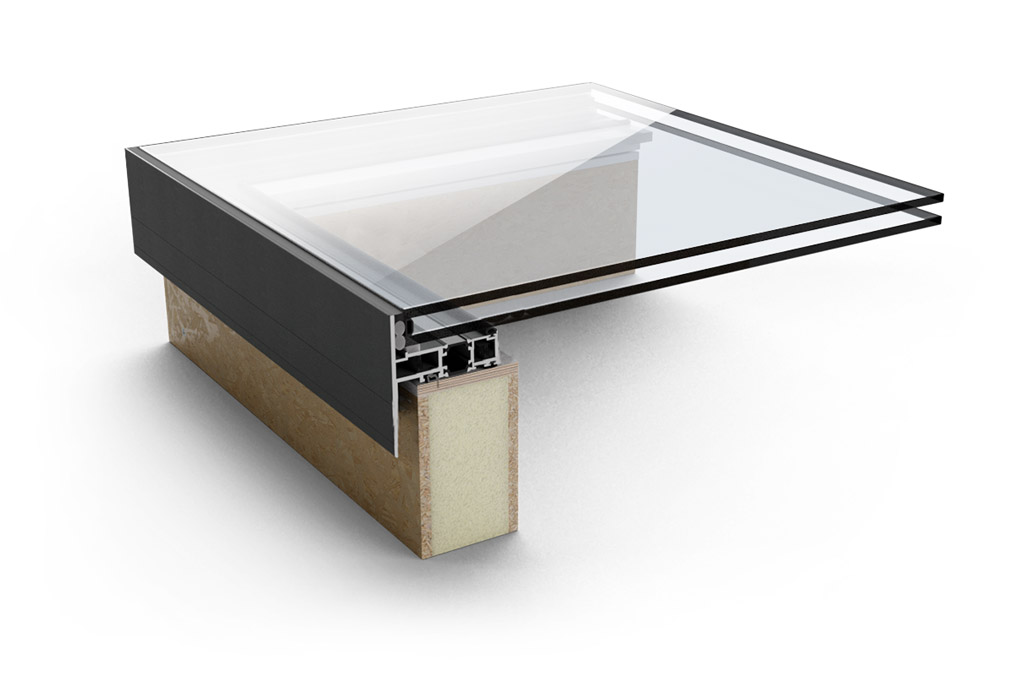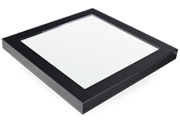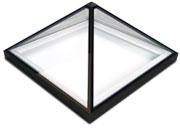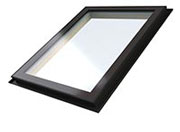Rooflights: What Are U Values and Why Are They Important?
Increasingly, new build projects as well as existing buildings are maximising the use of natural light together with the thermal properties of modern glass, to create a revolution in how we look at heat retention and accessing light sources.
When you consider the costs involved in paying for artificial light and heat, especially at a time when energy prices are soaring so significantly, rethinking our approach to and reliance on these basic needs makes a lot of sense. At EOS, our engineers and designers have dedicated significant time and painstaking attention to detail to ensure that our flat roof windows and opening flat roof lights achieve the best possible U-values.
A U value tells us how much heat is lost from a building through different elements, such as windows, walls and floors.
It is a measurement of heat transference, also known as the “overall heat transfer co-efficient“, meaning the higher the number value, the more heat is being lost, and the less environmentally friendly the building is. A lower value therefore indicates greater insulating properties and is more energy efficient.

Calculating the U Value
The U value of a building element is calculated by working out heat loss for each component of the building. This is determined by the material used, its thickness, and its positioning.
Current building regulations in England and Wales allow for all non-domestic applications, the worst acceptable standard for the thermal performance (U-value) of rooflights in the new part L building regulation is 1.6 W/m2k for domestic and 1.8 W/m2k for Commercial.
Rooflights are made up of a number of different component materials that each have different properties when it comes to heat transference. Therefore, to find out the U value of this type of element, a number of factors need to be determined.
It is simply not enough to state the glass centre pane U value of the glass unit as this does not represent the U value of the entire rooflight product.
Equally, thermal comparisons between competing rooflight products can only be made when U values for the whole rooflight are considered. A poorly designed triple glazed rooflight product may in fact perform worse than a well-designed double glazed product albeit the center pane U value of the triple glazed glass unit may be better than that of the double glazed glass unit.
Energy Effecient Rooflights.

Energy efficiency is at the core of our product range at EOS, each of our rooflights boasts U Values significantly lower than current and future building regulations. Our standard fixed products boast a 0.97 W/m2K U Value whereas our EOS triple glazed is able to get as low as 0.65Wmk system U Value.
In fact our U values are so low that official building standards permit you to increase the amount of glass within your roof area.
So, as well as flooding a building with daylight to naturally enhance the indoor environment, EOS rooflights ensure green energy efficiency by reducing the need for CO2-emitting artificial lighting, whilst guaranteeing that heat isn’t lost unnecessarily.
Discover the benefits of warm and cold roofs and their impact on rooflight upstands. Optimize your roofing system for efficiency.
For green efficient skylights with low U Values, speak to the EOS Rooflights team today.
Contact our team
If you have any questions, would like a bespoke price or want to enquire about our installation service. Give us a call or drop an email:
![]() 0208 462 3557
0208 462 3557
Other blogs you may like..
What is the Window on the Ceiling Called?
What is the Window on the Ceiling Called? As natural light becomes a priority in modern home design, ceiling windows are gaining popularity among self-builders and homeowners. Whether you refer to them as roof windows, skylights, or rooflights, these ceiling windows...
Understanding and Preventing Skylight Condensation
Understanding and Preventing Skylight Condensation Condensation on skylights is a common issue that can affect both homeowners and builders. It occurs when warm, moist air meets a cooler surface, causing water droplets to form. This can lead to water damage, mold...
What is Passive House?
What is Passive House? In an era where sustainability and energy efficiency are paramount, the concept of the Passive House has emerged as a game-changer in the construction and building industry. Originating from Germany (where it is known as Passivhaus), this...
How opening rooflights work
How Opening Rooflights WorkOpening rooflights are a versatile addition to any home, offering benefits such as ventilation, temperature regulation, and improved indoor air quality. They come in various types, including electric and manual versions, suited for different...
How to plan a kitchen extension with skylights
Planning a Kitchen Extension with Skylights Thinking of adding a skylight kitchen extension to your home? It's a fantastic idea! Installing a rooflight extension allows you to expand your kitchen and bask in the natural light while preparing meals, hosting guests, or...
What is a Skylight Upstand
What is a Skylight Upstand?Upstands are crucial for skylight installations, elevating them above the roof to ensure proper water runoff and weather protection. This essential design feature prevents leaks and structural damage by ensuring a secure, weather-resistant...



